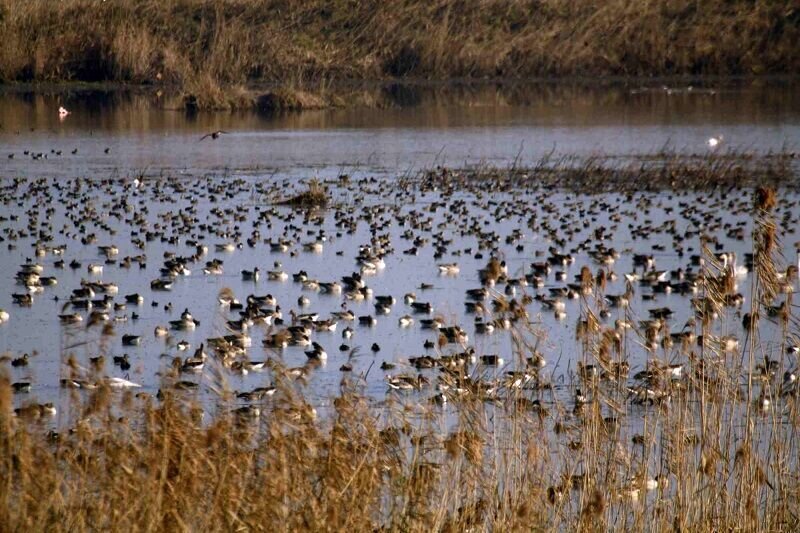Kani Barazan wetland hosting thousands of migratory birds

TEHRAN - Kani Barazan International Wetland, located in the northwestern province of West Azarbaijan, is hosting more than 30,000 migratory birds for wintering.
The unprecedented entry of migratory birds into the wetland is due to the revival of parts of the wetland, the existence of security and sufficient food, and the arrival of the cold wave and snowfall in other parts of the country.
Kani Barazan was once recorded as the first bird-sighting site in the country and birdwatchers call it Iran’s bird paradise.
With the release of water from the Mahabad dam and the restoration of the springs supplying water to Kanibrazan, the water condition of the wetland is now favorable, IRNA reported.
Migratory and native birds can be seen in a span of 100 hectares of Kani Barazan, where the water is deep enough.
This year, due to the fact that after passing a month in winter, heavy snowfall and a noticeable drop in temperature did not occur in the region and the water level of the wetland has not yet frozen, migratory birds such as gray geese and swans can still be seen.
Swans, gray geese, a number of endangered species such as white-headed ducks and marbled ducks, and other types of migratory birds including terns, anguts, herons, broad-billed ducks, green ducks, and gulls were observed in the wetland.
Stretching to 907 hectares, Kani Barazan wetland is home to various bird species including, flamingo, little cormorant, great white pelican, stilt, sternidae, great crested grebe, graylag goose, lesser white-fronted goose, heron, common shelduck and etc.
Its high capabilities, diverse vegetation, and the annual migration of 200,000 species of birds have made this wetland a precious bird-watching site for nature lovers.
So far, 75 species of water birds belonging to 11 families have been identified in this wetland, which will reach more than 180 species counting terrestrial species.
Drought and lack of water rights caused the loss of 70 percent of the wetland, causing negative environmental effects with the beginning of the bird migration season.
The water of this wetland is supplied from the Mahabad river, the spring of “Qarahdagh” village, the speed of water entry is in a good condition due to dredging.
Agricultural effluents and chemical fertilizers, entering the water body is a major threat to the wetland and its aquatic species and birds.
Wetland ecosystem
Wetlands are ecosystems saturated with water, either seasonally or permanently. They store water and ensure its quality, providing resilience against drought. They play a central role in sustainable development by supplying all our fresh water. More than 40 percent of freshwater fish are said to live in wetlands.
Wetlands play a major role in protecting the land against floods and the impacts of storms. They provide food and diverse habitats which support genetic, species, and ecosystem biodiversity. Wetlands play a key role in the life cycles of many species and in annual migration patterns.
Iran is rich in terms of having a variety of wetlands due to its climatic diversity. In Iran, 141 wetlands with ecological value with an area of over 3 million hectares have been identified, of which 25 wetlands are designated as wetlands of international importance (registered in the Ramsar Convention) covering more than 1.4 million hectares and four sites are biosphere reserves.
Of Iran’s 25 Ramsar sites about one-third are under pressure or in critical condition.
Unfortunately, wetlands are being degraded and lost due to pollution, overexploitation, climate change, and human population growth.
MG
